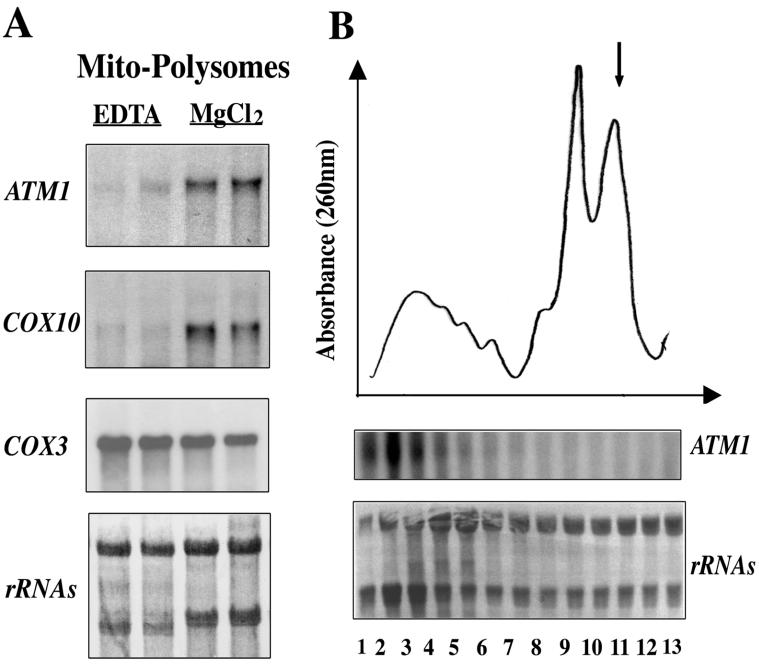FIG. 2.
The ATM1 transcript is specifically associated with mitochondrion-bound polysomes. (A) Northern blots were performed with RNA prepared from EDTA-treated mitochondria in MgCl2-free buffers (EDTA) or from untreated mitochondria in buffers containing 5 mM MgCl2 and 100 mM KCl (MgCl2). In the presence of EDTA, polysomes attached to mitochondria were washed off. This finding is visible after staining of the filter with methylene blue (shown at the bottom): the 18S rRNA band is strongly diminished, and the 16S rRNA band representing the mitochondrial specie is clearly distinguished. In these preparations, approximately 90% of the ATM1 and COX10 mRNA signal disappeared. (B) Fifty A260 units of cytoplasmic polysomes released from mitochondria, after Triton X-100 treatment, were sedimented in a linear sucrose gradient. The gradients were scanned at 260 nm, and fraction 1 is the bottom of the gradient. An arrow (upper panel) indicates the position of the 80S monosomes. Thirteen fractions were collected from each gradient to prepare RNA and then subjected to Northern blot analysis using ATM1 radiolabeled DNA (lower panel). The patterns obtained for polysomes released from mitochondria are very similar to the ones described by Suissa and Schatz (57). Furthermore, the profile of ATM1 mRNA is consistent with its almost exclusive association with polysomes containing four or more ribosomes. Very low levels of ATM1 signal were found in the 80S monosome fraction. Methylene blue staining of the filter is shown at the bottom.

